Ghirza: Mausoleum North-A
Q69121906Ghirza: Roman town in Libya, one of the main archaeological sites of the country.
Ghirza: Mausoleum North-A
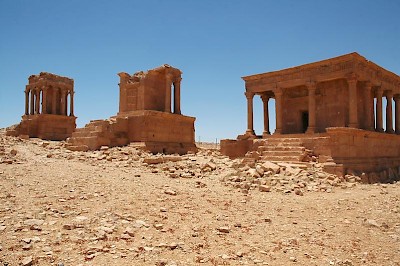
Ghirza's North Cemetery is about half a kilometer west of the center of the desert town. Unlike the tombs on the South Cemetery, which look like obelisks, the mausoleums of this cemetery resemble temples, comparable to the mausoleum of Qasr Banat. In Graeme Barker e.a., Farming the Desert. The UNESCO Libyan Valleys Archaeological Survey (1996), the North Cemetery of Ghira is known as Gh129.
Mausoleum A, which may also be called the tomb of Marchius Nasif and Marchia Mathlich, faces east, to the rising sun and more or less to the town itself. Like the other mausoleums, it is built on a high platform and surrounded by columns that are obviously inspired by classical styles (Ionic columns, in this case, combined with a Doric architrave).
Mausoleum A is unique because it has two funeral rooms. On stylistic grounds and the evidence of ceramics, it can be dated to the early fourth century, which can also be deduced from the spelling of the Latin name Marcius. In the fourth century, the letters ci, which had always represented /ki/, were increasingly often pronounced as /si/. Most Romans accepted this and said Marsius instead of Markius, but the Libyans of Ghirza retained the original pronunciation, and included an h to leave no doubt about this.
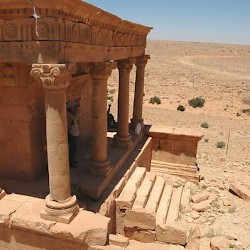 Ghirza, Mausoleum North A |
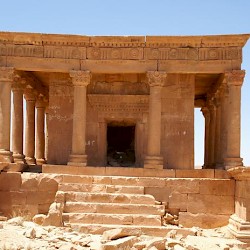 Ghirza, Mausoleum North A, façade |
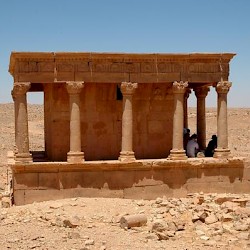 Ghirza, Mausoleum North A |
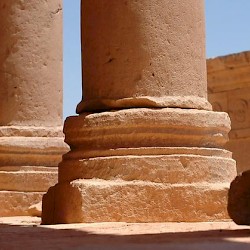 Ghirza, Mausoleum North A, column bases |

Above the door, which one can still reach by the stairs to the right, was a simple frieze, in which a Latin inscription was included. To the left and right of the inscription were depictions of two eagles carrying hares. They may represent the ascension to heaven of the soul.
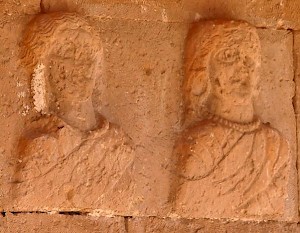
The inscription, now in the archaeological museum of Lepcis Magna, mentions the two deceased (Marchius Nasif and Marchia Mathlich), for whom their sons Marchius Nimira and Fydel have erected the monument.
On the southern wall, the two portraits shown to the right were included. One of the women may be Marcia Mathlich - but who is the other?
The decoration of the monument is fairly common: a Doric architrave with the monument's only gargoyle (in the desert!), columns with Ionic capitals, and and a frieze, which shows two peasants with a bull and a lion attacking an unidentified animal.
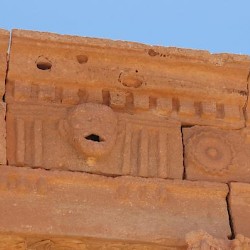 Ghirza, Mausoleum North A, decoration: metope |
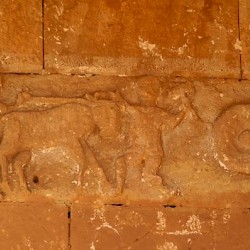 Ghirza, Mausoleum North A, decoration: plowing |
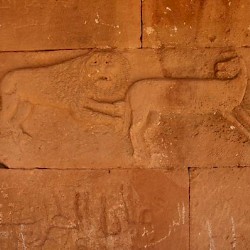 Ghirza, Mausoleum North A, decoration: lion |
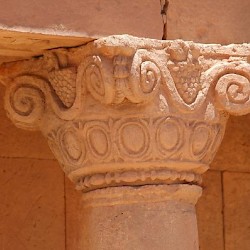 Ghirza, Mausoleum North A, capital |